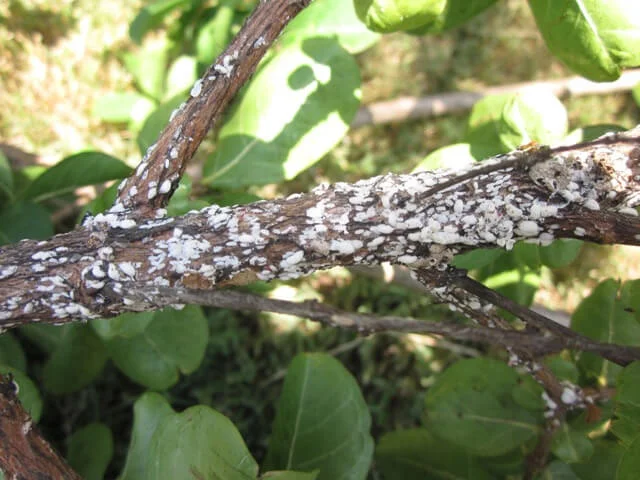Crape Myrtle Bark Scale: What You Should Know

The crape myrtle is a popular tree in the southeastern United States, favored for its beauty, variety, and ability to endure difficult conditions. Until recently, the greatest threat to the crape myrtle was improper pruning, commonly known as “crape murder”. However, a relatively new insect, Crape Myrtle Bark Scale, is beginning to cause major problems. Crape Myrtle Bark Scale (CMBS) is one of the only scales known to infest our favored trees and is spreading across the southern states at an alarming rate.
The first thing people usually spot when discovering their trees have a CMBS infestation is a black, sooty mold residue on the tree bark, sometimes replacing the bark’s original brown color entirely. While easy to spot, it may be misleading and hard to identify since aphids, a more common pest, can also display a sooty mold. However, the CMBS insect itself can be relatively easy to identify. They are small insects that appear as white or gray felt-like encrustations and can be found in various locations on trees. CMBS attach themselves to the tree and suck nutrients from its bark. While this is not enough to kill the tree, the loss of nutrients can interfere with future blooms, causing them to be less colorful and radiant or fail to bloom entirely.
Toward the end of its life cycle, CMBS produce their next generation—averaging around one-hundred eggs. In one year, there could be at least two generations. With such a high reproduction rate, CMBS can become very problematic very quickly. It’s best to act fast in order to avoid continuous growth of the infestation. While CMBS is difficult to control, consistent treatment can help restore the beauty of your trees.
If you think you may have spotted a case of CMBS on your crape myrtles, act now! Contact us today, and one of our landscape professionals will be happy to come out to your property, perform a close inspection, and help you formulate a plan of action to save your trees as soon as possible.


































